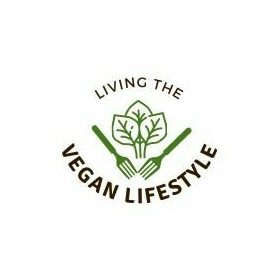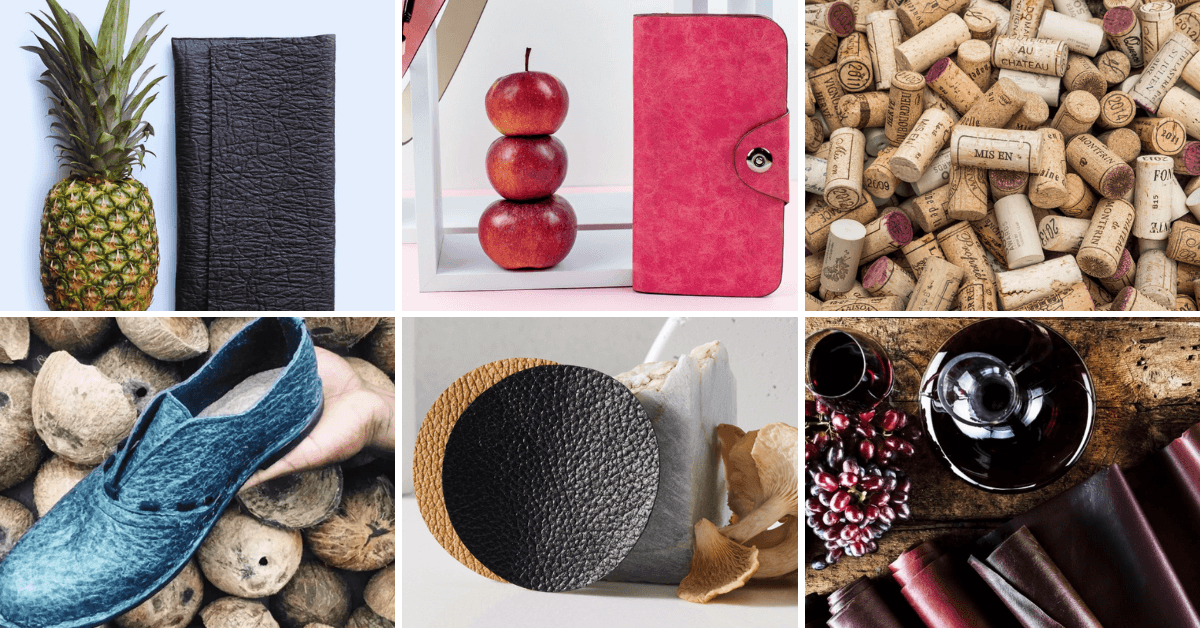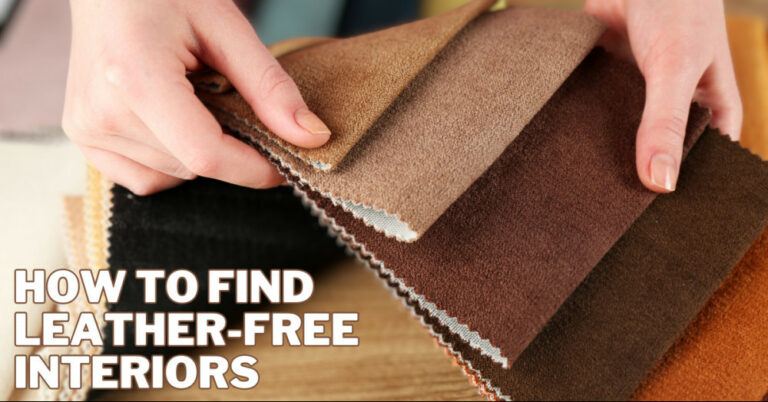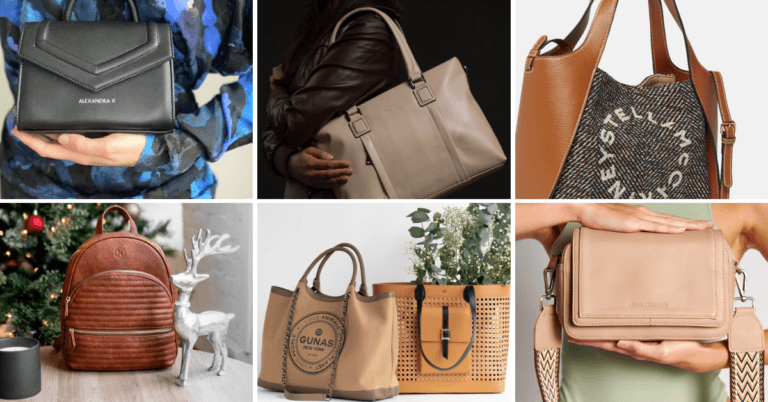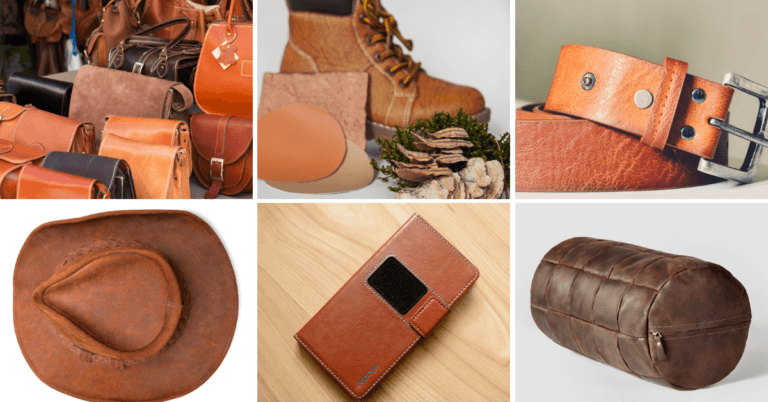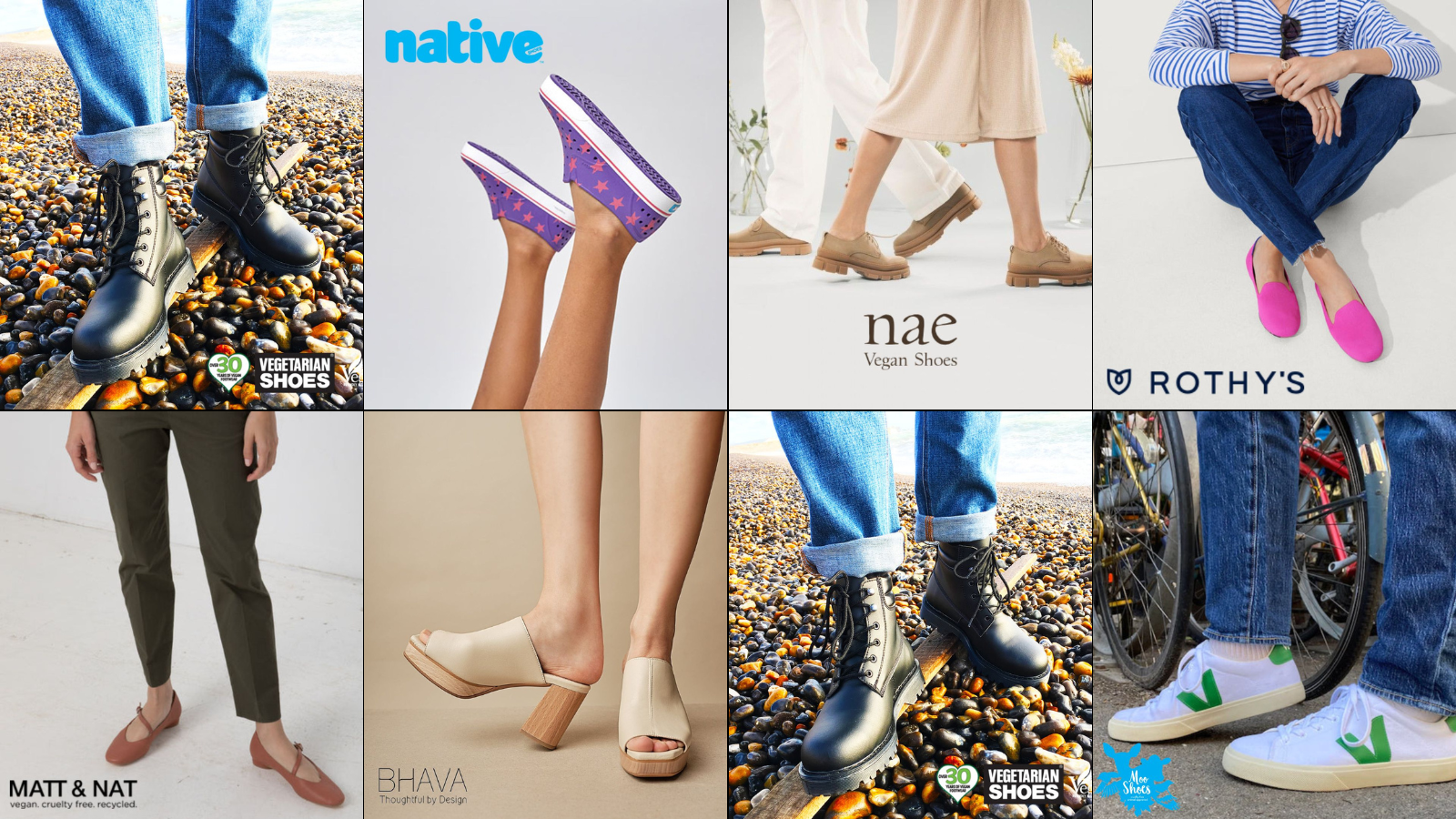Best Eco-Friendly Vegan Leather Alternatives
Best Eco-Friendly Vegan Leather Alternatives
The demand for sustainable and cruelty-free fashion has reached new heights in an era marked by heightened environmental awareness and a growing commitment to ethical consumerism.
This surge in consciousness has given rise to innovative alternatives to traditional animal-derived materials, particularly leather.
Enter the world of eco-friendly vegan leather alternatives – a realm where style meets sustainability and fashion-forward individuals can make conscious choices without compromising quality or aesthetics.
In this article, we embark on a journey to explore the best eco-friendly vegan leather alternatives that redefine the concept of fashion, offering a harmonious blend of style, ethics, and environmental responsibility.
From pineapple leaves to mushroom caps, discarded apple peels to cacti, and recycled plastics to innovative textiles, we delve into a diverse array of materials that are revolutionizing the fashion landscape and paving the way for a more compassionate and eco-conscious future.
Exploring Eco-Friendly Vegan Leather Alternatives
In a world where sustainability and ethical considerations are becoming increasingly important, the fashion industry is witnessing a remarkable shift towards eco-friendly and cruelty-free materials.
One notable area of innovation is the development of vegan leather alternatives. These alternatives offer traditional leather's style and functionality without the environmental impact and ethical concerns associated with animal products.
Here is a list of some of the best eco-friendly vegan leather alternatives that are making waves in the fashion industry:
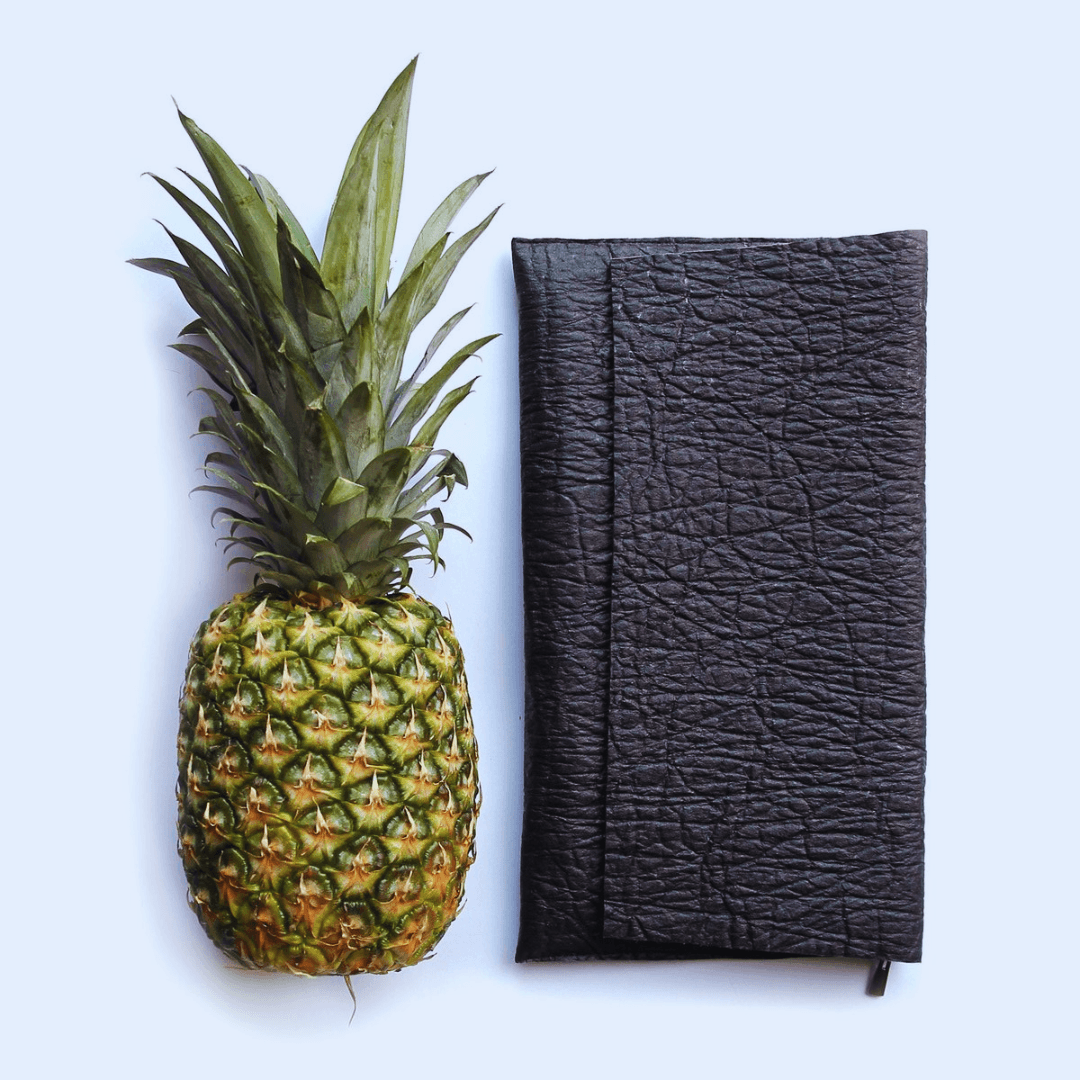
1. Piñatex
Piñatex is a revolutionary vegan leather alternative crafted from the fibres of pineapple leaves, making it a sustainable and eco-friendly choice for conscious consumers.
The process begins by extracting the long, sturdy fibres from pineapple leaves, a fruit industry's byproduct.
These fibres are then transformed through a process that involves mechanical and chemical treatments to create a non-woven textile with a leather-like texture.
One of the remarkable features of Piñatex is its positive impact on local farming communities.
The production of Piñatex provides additional income to farmers who would otherwise discard the pineapple leaves as waste. This contributes to economic growth and supports sustainable agricultural practices.
Piñatex is biodegradable and reduces the need for land, water, and pesticides, making it an environmentally responsible choice.
The material's unique texture and appearance, reminiscent of traditional leather, make it a versatile option for various fashion and accessory items, from bags and shoes to clothing.
Piñatex's commitment to cruelty-free and sustainable practices aligns with the growing demand for ethical and planet-friendly alternatives in the fashion industry.
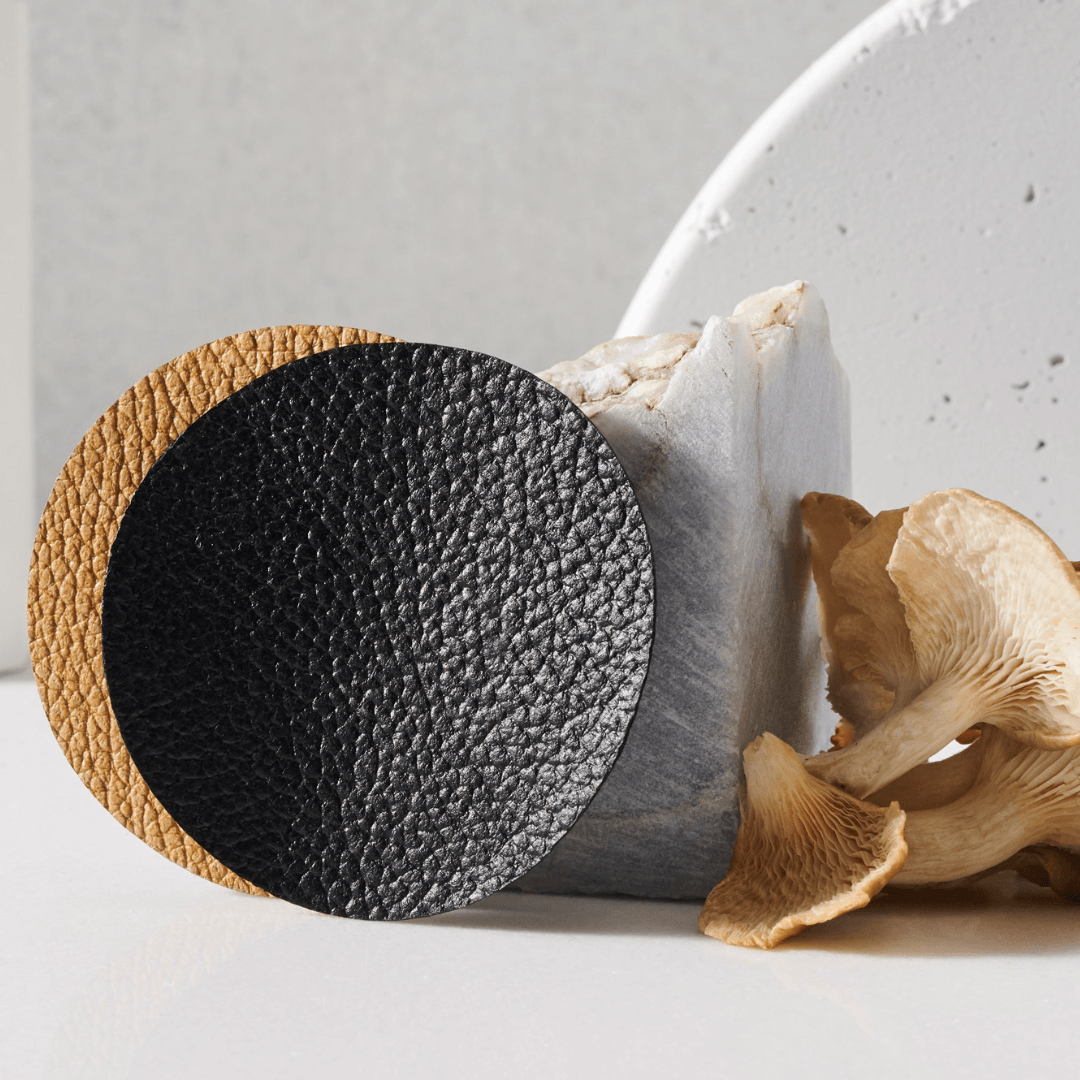
2. Mushroom Leather (Mycelium Leather)
Mushroom leather, also known as mycelium leather, is a cutting-edge, eco-friendly alternative to traditional leather derived from the root structure of fungi.
This innovative material is cultivated by growing mycelium, the vegetative part of fungi, on agricultural waste or other organic substrates.
As the mycelium grows, it forms a dense fibre network that binds the substrate, creating a durable and flexible material.
One of the remarkable qualities of mushroom leather is its compostable nature, contributing to a circular and sustainable product lifecycle.
At the end of its useful life, mushroom leather can be returned to the earth and decomposed naturally, minimizing environmental impact.
The material's versatility is another highlight, as it can be moulded into various shapes and forms, making it suitable for a wide range of products, including bags, shoes, and clothing.
Mushroom leather's soft and leather-like texture offers a luxurious feel, appealing to consumers seeking style and sustainability.
Moreover, the production process requires significantly less water, land, and energy than traditional leather production, reducing the strain on natural resources.
As a result, mushroom leather stands as a shining example of how nature-inspired materials can revolutionize the fashion industry while aligning with eco-conscious values.

3. Apple Leather
Apple leather presents a remarkable eco-friendly alternative to conventional leather, harnessing the discarded peels and cores from the food industry to create a sustainable and versatile material.
This innovative approach addresses waste reduction and offers a unique texture and appearance.
The production process typically involves grinding the apple waste into a fine pulp and then carefully processing and binding it with natural additives and fibres to form a durable material that closely mimics the texture of traditional leather.
The resulting apple leather boasts a supple feel and a distinct aesthetic that can rival genuine leather in both look and touch.
Its versatility shines through as it can be used to craft various accessories, including bags, wallets, and phone cases.
Beyond its aesthetic and functional qualities, apple leather significantly reduces agricultural waste and utilizes resources that would otherwise be discarded.
This eco-friendly material minimizes the environmental impact associated with traditional leather production, which often involves resource-intensive practices by repurposing apple byproducts.
As consumer awareness of sustainability and ethical choices grows, apple leather emerges as a promising option for those seeking stylish accessories without compromising their commitment to the planet.
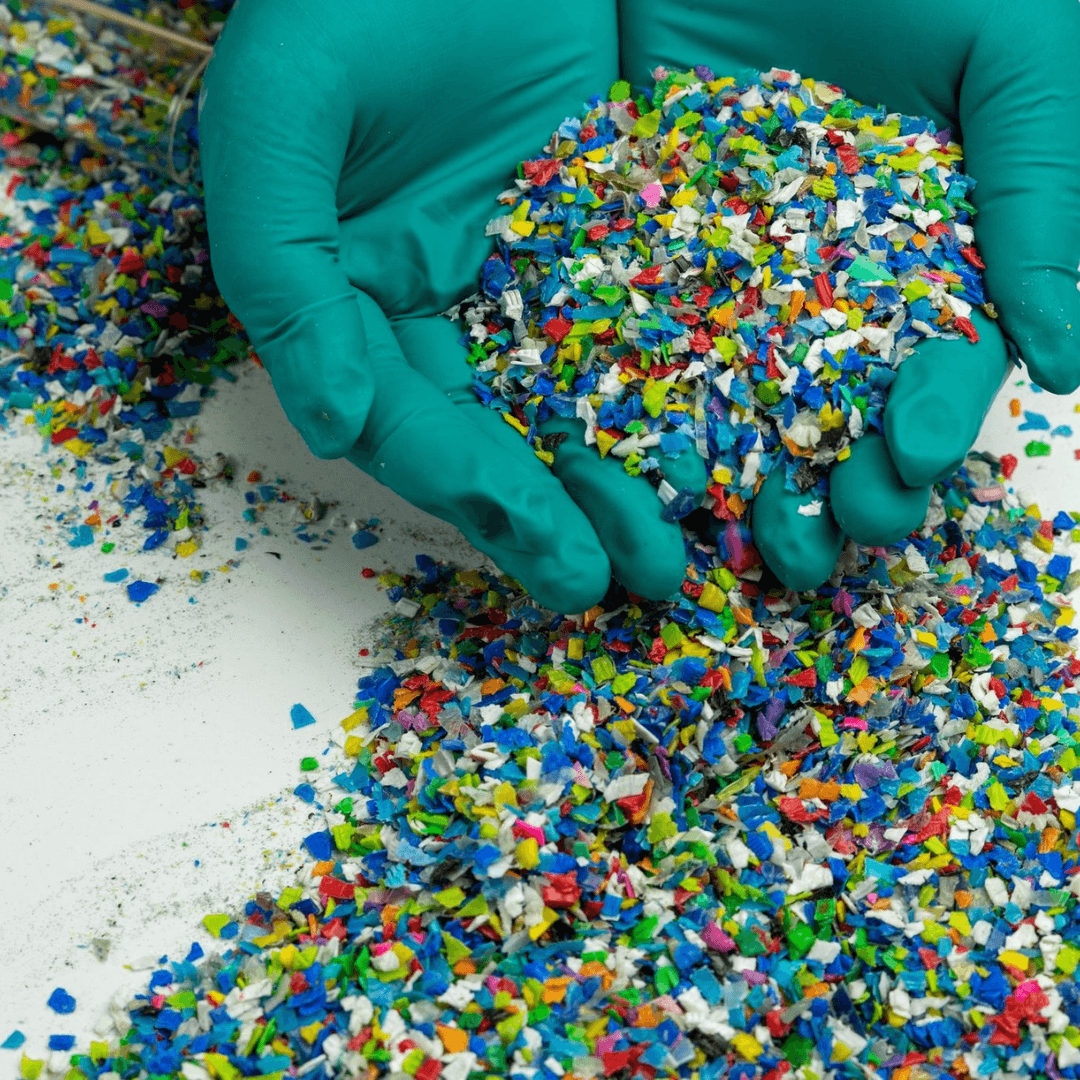
4. Recycled Plastic
Recycled plastic vegan leather embodies a visionary convergence of sustainability and style, turning discarded plastic waste into a remarkable fashion statement.
This eco-conscious material utilizes advanced techniques to reconstitute plastic bottles and other discarded plastic materials into a versatile and robust fabric that mirrors the appearance and texture of traditional leather.
Production often involves collecting, cleaning, and processing plastic waste to extract fibres woven together to create a strong and flexible material. The resulting recycled plastic vegan leather boasts a sleek aesthetic.
It is remarkably durable, making it an ideal choice for various products, from bags and shoes to accessories.
Beyond its aesthetic appeal, this innovative material carries substantial environmental benefits by diverting plastic waste from landfills and oceans, helping to address the global plastic pollution crisis.
By giving new life to discarded plastics, recycled plastic vegan leather significantly reduces the need for virgin resources and lowers the carbon footprint associated with traditional leather production.
As a testament to the potential of sustainable fashion, this material showcases the power of creative design and responsible production methods.
Embracing recycled plastic vegan leather elevates your style and demonstrates a commitment to a more circular and environmentally conscious approach to fashion.

5. Cork Leather
Cork leather, derived from the bark of cork oak trees, embodies a harmonious blend of nature's beauty and sustainable innovation.
Harvesting cork leather involves carefully peeling the outer bark from the oak trees, allowing the trees to continue growing and regenerating their bark over time.
This makes cork leather a truly renewable resource, as the same tree can be harvested multiple times throughout its lifespan.
The harvested cork is then treated and processed to create a versatile and durable material that resembles traditional leather's texture and appearance.
One of the remarkable qualities of cork leather is its exceptionally lightweight nature, making it a practical choice for various accessories and products without compromising on strength and resilience.
Additionally, cork leather exhibits natural water-resistant properties, rendering it suitable for many applications, from bags and wallets to footwear.
The distinctive texture of cork leather adds a touch of uniqueness and character to each piece, capturing the rustic charm of its origins.
Embracing cork leather promotes sustainable forestry practices, as the cork oak trees play a crucial role in preventing desertification, conserving biodiversity, and sequestering carbon dioxide.
By choosing cork leather, you not only adorn yourself with a stylish and eco-friendly material but also contribute to preserving vital ecosystems and promoting sustainable land management practices.
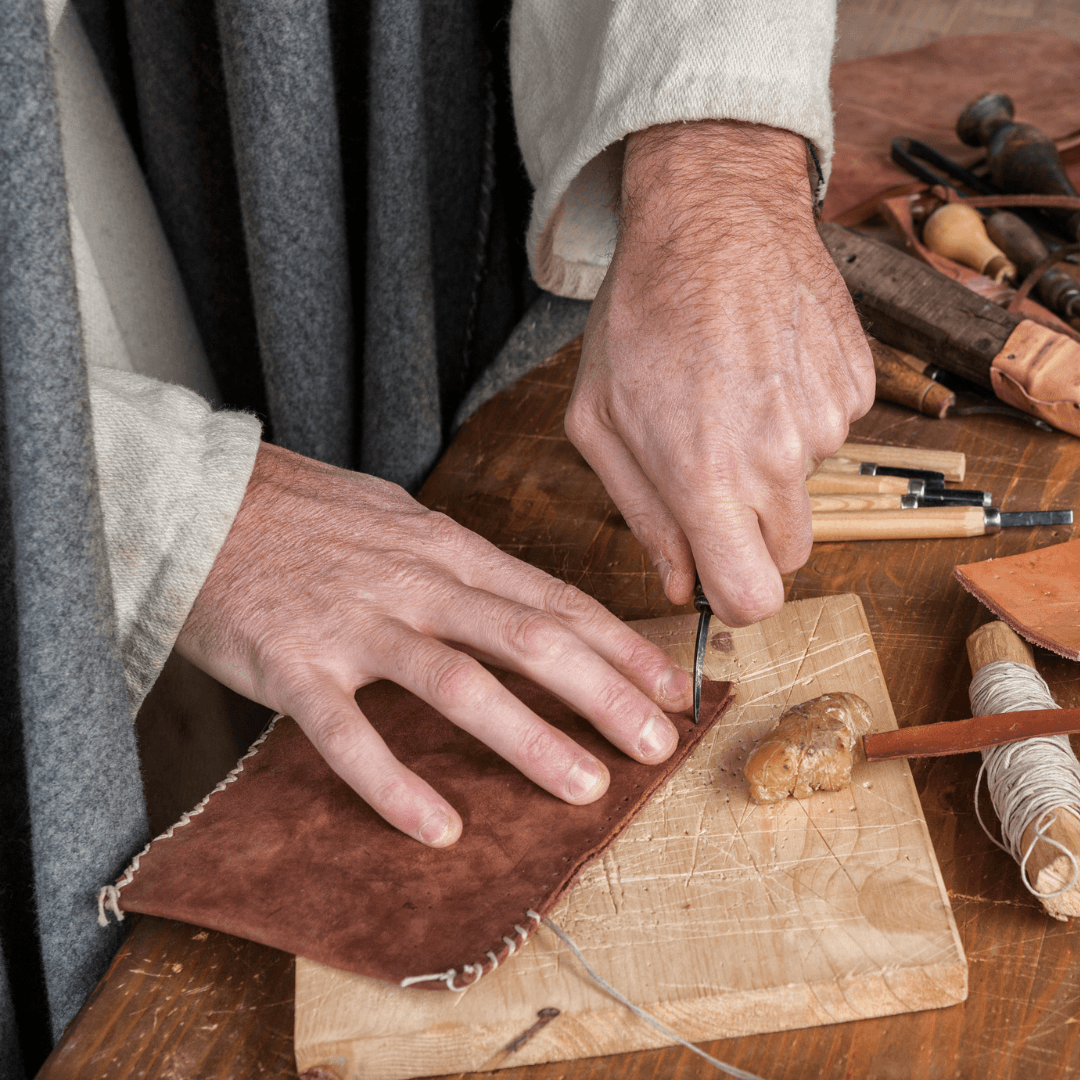
6. Soy Leather
Soy leather, an innovative and eco-friendly material, emerges as a remarkable example of turning agricultural waste into a valuable resource.
Crafted from byproducts of soybean processing, soy leather offers a sustainable alternative to conventional leather while reducing agricultural waste.
The process begins with isolating the proteins from soybean waste, combined with other natural materials to create a pliable and versatile material.
This process repurposes waste that might otherwise be discarded and minimizes the environmental impact associated with traditional leather production.
Soy leather can be treated and textured to closely emulate the look and feel of traditional leather, providing a cruelty-free option for those seeking the aesthetics and durability of leather without contributing to animal exploitation.
Its versatility is evident in its use across various products, including accessories, upholstery, and clothing items.
An intriguing aspect of soy leather is its renewable nature – it originates from a crop that can be replanted yearly, ensuring a consistent and sustainable supply.
Furthermore, its production requires less water and energy compared to animal leather. By embracing soy leather, consumers can reduce agricultural waste, promote more sustainable farming practices, and foster a fashion industry that aligns with ethical and environmental considerations.
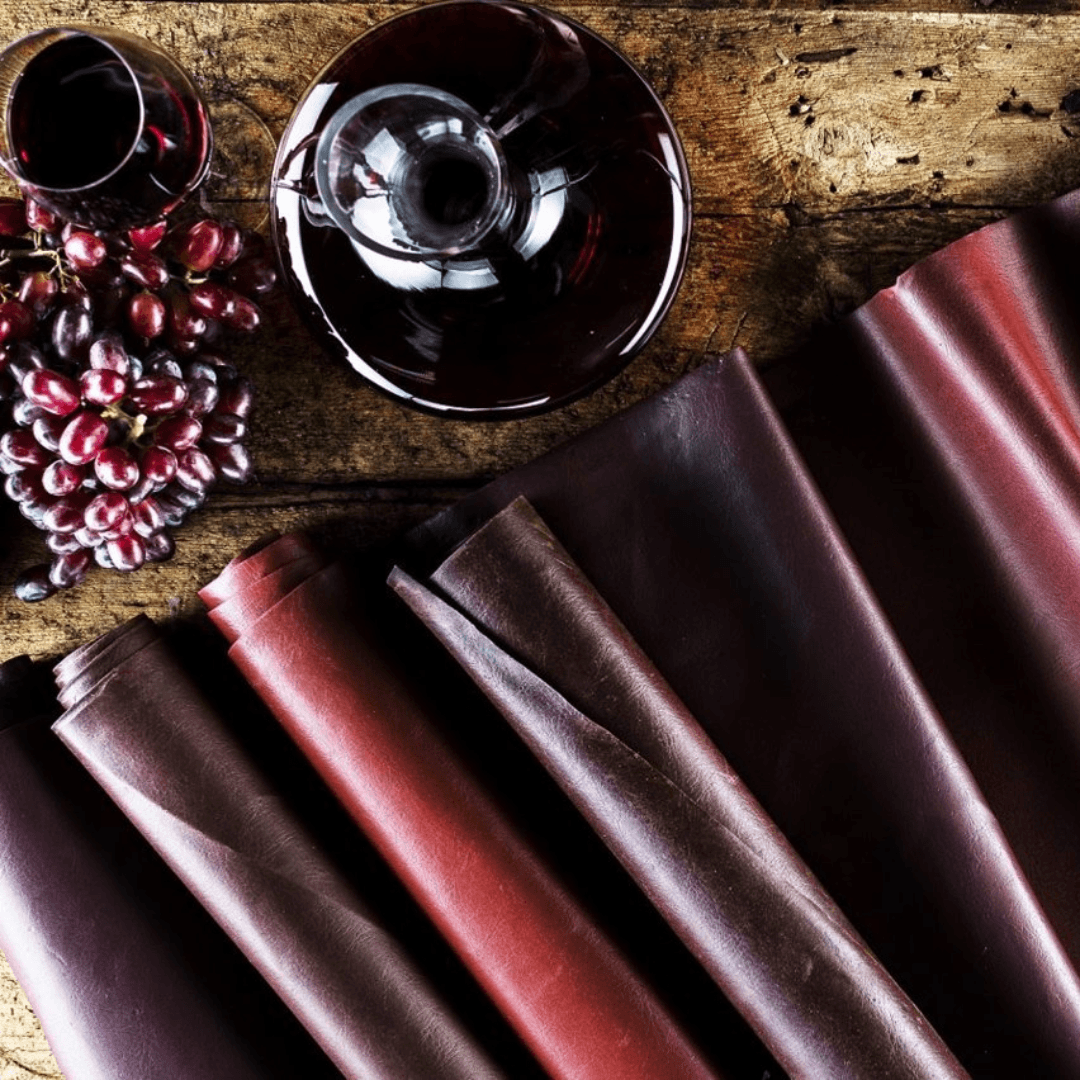
7. Wine Leather
Wine leather, a captivating and inventive material, embodies the concept of sustainability by repurposing the byproducts of wine-making into a luxurious and environmentally conscious alternative to traditional leather.
This innovative process involves utilizing grape skins, seeds, and stalks that remain after the wine-making process, which would otherwise be discarded as waste.
These wine residues are then transformed into a durable and distinctive material, capturing the essence of sustainability and circular economy principles.
Wine leather showcases a textured and visually appealing surface characterized by its natural variations and unique patterns.
Its ability to mimic the qualities of animal leather without ethical and environmental drawbacks makes it an attractive option for eco-conscious consumers seeking versatile and stylish accessories, upholstery, or fashion items.
Notably, producing wine leather reduces waste in the wine industry. It extends the utility of the raw materials, aligning with the growing emphasis on minimizing resource consumption and waste generation.
This emerging material offers a novel solution for waste management and highlights the potential for collaboration and innovation across various industries to create more sustainable and ethical alternatives.
Choosing wine leather as a preferred material encourages adopting eco-friendly practices, supporting a circular economy model and promoting conscious consumption within fashion and design.

8. Corn Leather (Bio-Leather)
Corn leather, also known as bio-leather, represents a groundbreaking stride in eco-friendly and sustainable vegan leather alternatives.
Crafted from cornstarch, a renewable and abundant resource, corn leather is a biodegradable and environmentally conscious choice.
The production process involves extracting cornstarch from corn kernels and combining it with biopolymers and natural fibres to create a flexible and durable material with leather-like attributes.
One of the distinguishing features of corn leather is its biodegradability, ensuring that it returns to the natural environment without leaving a lasting ecological footprint.
This quality aligns with the ethos of sustainability, addressing concerns about the persistence of synthetic materials in ecosystems.
Corn leather exhibits a smooth and supple texture akin to traditional leather, making it a versatile option for fashion, accessories, and upholstery.
Its renewable origin and biodegradable nature contribute to reduced greenhouse gas emissions and a decreased reliance on fossil fuels, making it an attractive choice for environmentally conscious consumers.
By opting for corn leather, individuals not only support a more sustainable material but also encourage the adoption of innovative technologies that promote circular economy principles and lessen the impact on the planet.
As the demand for eco-friendly alternatives continues to rise, corn leather emerges as a promising solution that blends functionality, aesthetics, and environmental responsibility.
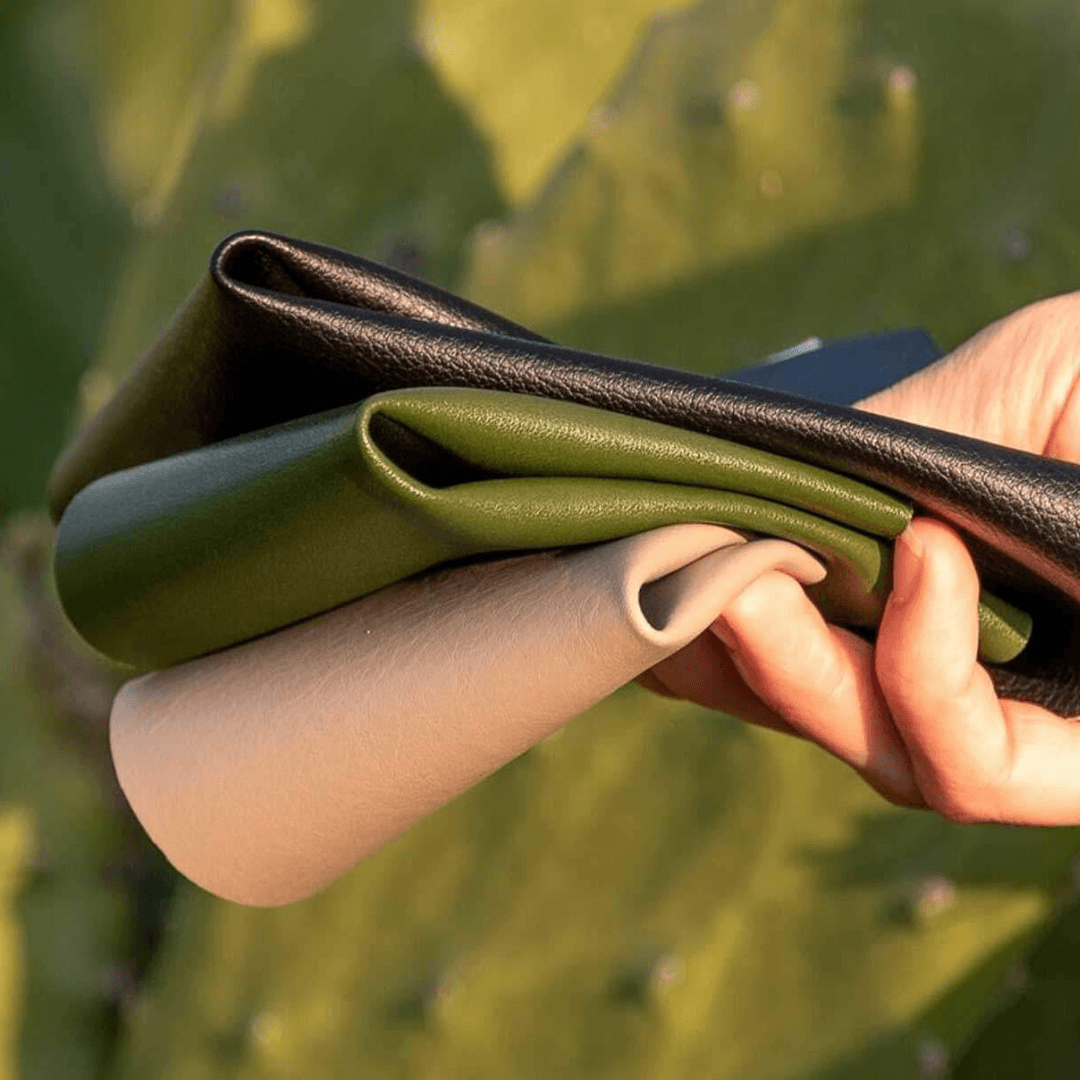
9. Cactus Leather (Nopal Leather)
Cactus leather, also known as nopal leather, represents a remarkable innovation in sustainable and eco-friendly vegan materials.
Derived from the prickly pear cactus, this alternative offers many benefits that align with both environmental consciousness and functional versatility.
The production of cactus leather involves processing the mature leaves of the cactus plant, which are rich in fibres and mucilage.
This extraction process produces a soft, supple, and flexible material that resembles the texture and appearance of traditional leather.
One of the standout features of cactus leather is its minimal environmental impact. The prickly pear cactus is well-suited to arid and semi-arid regions, requiring significantly less water than conventional leather production.
Additionally, it thrives on land unsuitable for traditional agriculture, minimizing competition with food crops.
The drought-resistant nature of cactus leather cultivation contributes to reduced water consumption and supports sustainable land use practices.
Moreover, cactus leather is biodegradable, ensuring it can return to the earth without causing long-lasting environmental harm.
Cactus leather has garnered attention in the fashion and design industries with its softness, durability, and sustainability blend.
Its unique qualities make it a desirable option for products ranging from accessories and footwear to upholstery.
By choosing cactus leather, consumers support a regenerative and environmentally friendly material while advocating for innovative solutions that tread lightly on the planet.
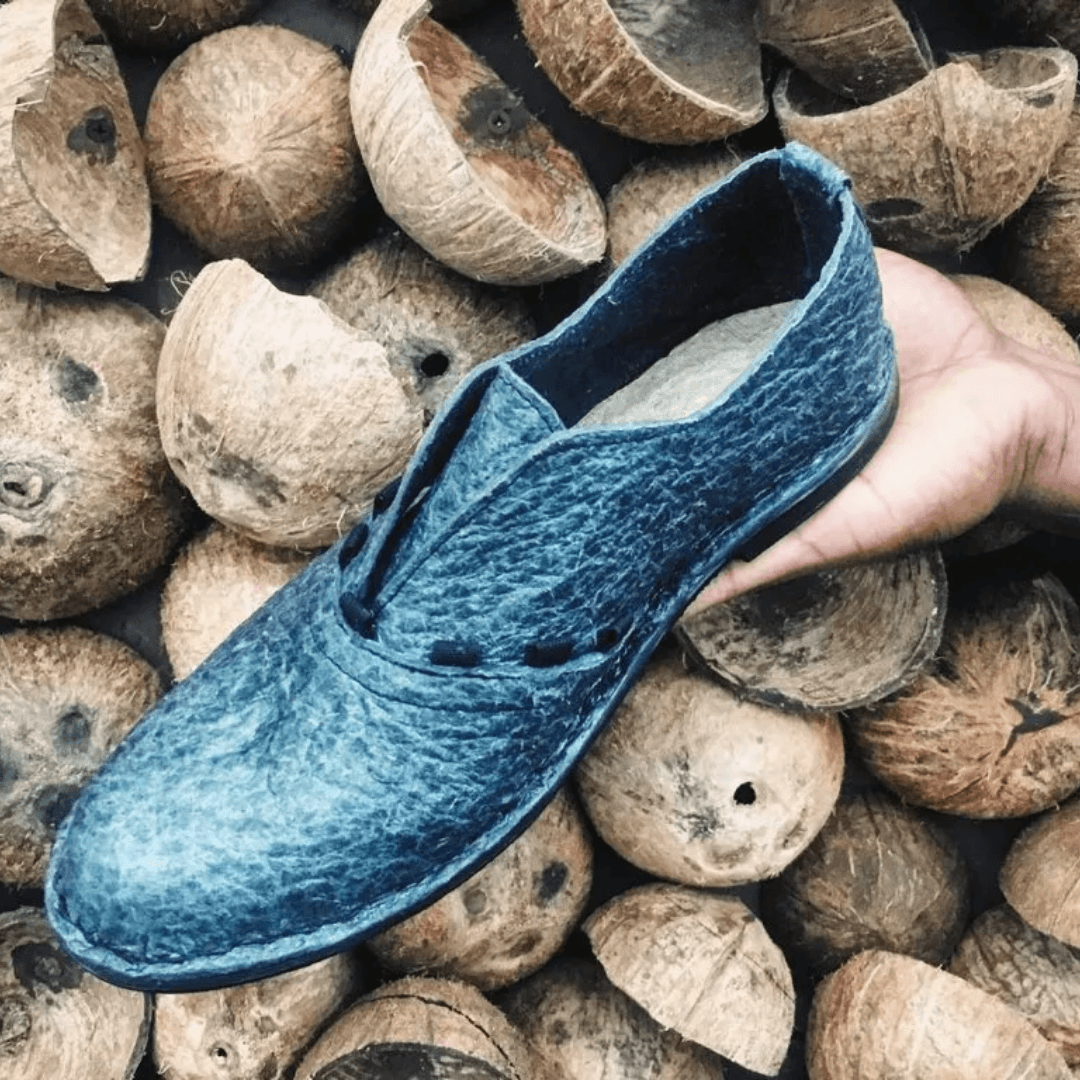
10. Coconut Leather
Coconut leather, a burgeoning eco-friendly alternative in the realm of vegan materials, is derived from the seemingly boundless resources of the tropical coconut tree.
This innovative material is crafted from a combination of coconut water and natural fibres, often extracted from the husk of the coconut fruit.
The resulting material boasts a unique blend of durability, flexibility, and sustainability. Coconut leather presents a renewable option and aligns closely with the principles of circular economy and responsible production.
Using coconut waste, a byproduct of the thriving coconut industry helps reduce overall waste and supports sustainable resource management.
The production process involves transforming the coconut fibres into a textile-like material, which can then be treated and processed to exhibit a leather-like texture and appearance.
Coconut leather's natural hue and tropical flair add a distinctive charm, making it an appealing choice for those seeking environmental responsibility and aesthetics.
Its biodegradability ensures it returns to the earth at the end of its life cycle without contributing to the persistent waste issues associated with traditional leather alternatives.
The versatility of coconut leather extends to a wide range of applications, including fashion accessories, footwear, bags, and even furniture upholstery.
By embracing coconut leather, consumers consciously support sustainable practices while embracing a touch of the tropics in their everyday lives.

11. Hemp Leather
Hemp leather is a testament to the incredible versatility and eco-friendliness of the hemp plant.
With its strong and fibrous stalks, hemp is a sustainable foundation for creating a range of products, including a viable vegan leather alternative.
Hemp leather's appeal lies in its durability and strength and its low environmental impact. Hemp is a fast-growing crop that requires minimal water and pesticides, making it an excellent candidate for sustainable and responsible cultivation practices.
The production of hemp leather involves extracting fibres from the hemp plant, which are then processed and treated to create a textile with leather-like qualities.
This textile can mimic the texture and appearance of traditional leather, offering a cruelty-free and environmentally conscious option for fashion and accessories.
Hemp leather's natural texture and earthy aesthetic contribute to its appeal, often resonating with those who appreciate both style and sustainability.
The robust and hardwearing nature of hemp leather ensures that it can withstand the rigours of everyday use, making it suitable for various applications such as bags, wallets, belts, and even clothing.
As the world increasingly embraces sustainable alternatives, hemp leather stands out as a shining example of how plant-based materials can provide a solution that is kind to consumers and the planet.
By choosing hemp leather, individuals contribute to reducing the fashion industry's environmental footprint while enjoying a durable and stylish product that aligns with their ethical values.
Conclusion
In fashion and sustainability, the rise of eco-friendly vegan leather alternatives marks a significant step towards a more conscious and ethical industry.
As consumers become more aware of the environmental and ethical impacts of their choices, the demand for cruelty-free and sustainable materials has led to the development of innovative options that mimic the texture and appearance of traditional leather.
The fashion industry, often criticized for its environmental footprint, is transforming designers and brands to embrace these alternatives to craft stylish, high-quality products that resonate with conscious consumers.
Individuals can positively impact the planet by choosing these eco-friendly vegan leather options, supporting sustainable practices and promoting a more ethical approach to fashion.
As technology and innovation continue to drive the development of new materials, the future holds exciting possibilities for a fashion industry that is truly in harmony with nature and values both style and sustainability.
The journey towards a more sustainable and compassionate fashion world is a collective effort, and the availability of these eco-friendly vegan leather alternatives empowers consumers to make choices that align with their values and contribute to a brighter and greener future.
I trust you enjoyed reading the article about the Best Eco-Friendly Vegan Leather Alternatives. Would you please stay tuned? There are more blog posts to come very shortly.
JeannetteZ
Your Opinion Is Important To Me
Ideas? Thoughts? Questions? I would love to hear from you. Would you mind leaving me your questions, experience, and remarks about the Best Eco-Friendly Vegan Leather Alternatives in the comments section below? You can also reach me by email at Jeannette@LivingTheVeganLifestyle.org.
Please click here to read more about Vegan Leather on Peta.org<<<
You might also enjoy these blog posts:
Best Online Shops To Buy Vegan Leather Vegan Products
Best Places To Buy Vegan Leather
The Definitive Guide To Vegan Fashion And Style
